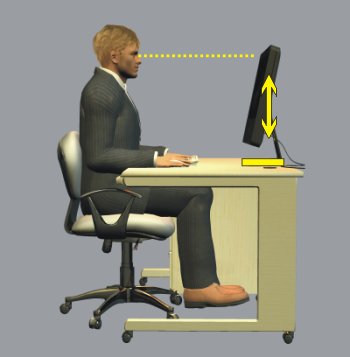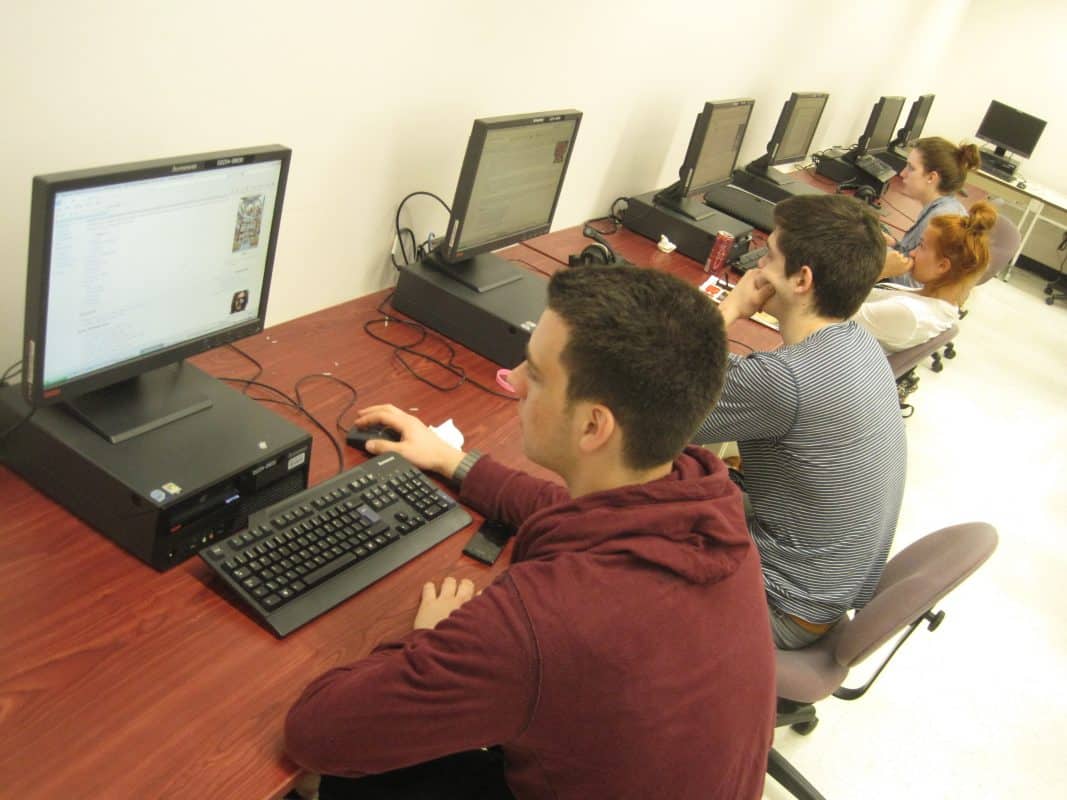Hunching over your computer is one of the first reason why four in five people end up with crippling back pain at some point in their lives. But a few simple changes in the way you work can make your pain vanish.
Sitting for a long time in front of a computer is storing up trouble. No matter how good your positioning, it is essential to get up every so often.
Here are simple tips that will go a long way in helping your back feel better while at work.
Setting up your desk

A typical ergonomic evaluation at your work generally wants to focus particularly on providing a comfortable, adjustable chair, with or without appropriate education on how to adjust it to fit you, and a keyboard tray. Some of the workplaces will evaluate the positioning of the printers, screens, and the mouse. Sometimes an employer will generally purchase a standing desk for someone with neck and upper back pain due to logging long hours in the office.
If a stand-up desk is not an option for you, there are inexpensive desktop converters which enable you to keep your desk and convert it to a stand-up desk either inexpensively and/or if you only want to stand for part of the day. For people who aren’t sure if they can manage standing up all day, this is an easy way to try it without having to change your current desk.
Sitting with support

Your favorable ergonomic setup should start with your sitting position.When you are sitting at your desk, your feet should be flat on the floor, and the height of the chair should always allow your thighs to angle down slightly. This position generally will allow you to place your weight on your “sitting bones” rather than rounding your lower back and also causing your shoulders to round out and your posture to slump forward.
Adjusting keyboard tray height

Set your keyboard high enough so when your elbows are bent approximately towards 90 degrees, you are not forced to slump down through your shoulders to touch the keys. If the tray is too low and you cannot be adjusted, to place the keyboard on your desk.The mouse should be placed at the same level as the keyboard placed. If you use a drafting pad, it should also be at this height. Whether it is angled or not is a personal preference.
Looking straight at your monitor
Almost all the people will have a monitor that sits too low. By placing the monitor so the bottom is approximately the level of your chin. This generally varies slightly, with a 13-inch to 14-inch monitor slightly to the higher position than chin height, and a 24-inch monitor slightly lower. If your monitor is too low, you generally will slump down to work.

If you work particularly on your laptop, you should then use your secondary monitor, if possible, when you are at your desk, as the laptop screen will force you to angle your head towards down and increase stress on your neck. The larger monitor should be placed directly in front of you.
Occasionally a computer station will include an off-center monitor. Adjust this if you can. If you have ever watched a movie while keeping your head turned slightly while on a couch, you know the uncomfortable neck strain and stiffness that results.
Avoiding your cell phone for emails

Cellphones and also tablets which are most likely to cause problems when people use them for their email and texting and screen time.Often you can also find that people with neck and upper back pain answer emails using a cell phone or tablet at home or in the office. It is essential to limit your workload and overall use of phones and also tablets.At any time you can answer emails through an actual computer, as working on a computer offers the best chance for good posture.
Getting up and walking around

Sitting in your office chair seems to be very simple, but it can be fatiguing. Your posture suffers the longer you sit.If you have back, neck, and/or shoulder pain, it is best to stand up and walk around the office every half hour. The best way to do this is to set a silent alarm on your smartphone to go off for every 30 minutes. It may not be possible to get up every time the alarm goes off, but it can be a good reminder that you have been sitting for quite a while, especially if you skip the alarm a few times in a row.The alarm can help you stay accountable to yourself, making sure you are not compromising your health for your work.
Follow these tips to lower your pain, but for back pain that lasts more than six weeks, treatment typically involves a combination of painkillers and either acupuncture, exercise classes or manual therapy.

